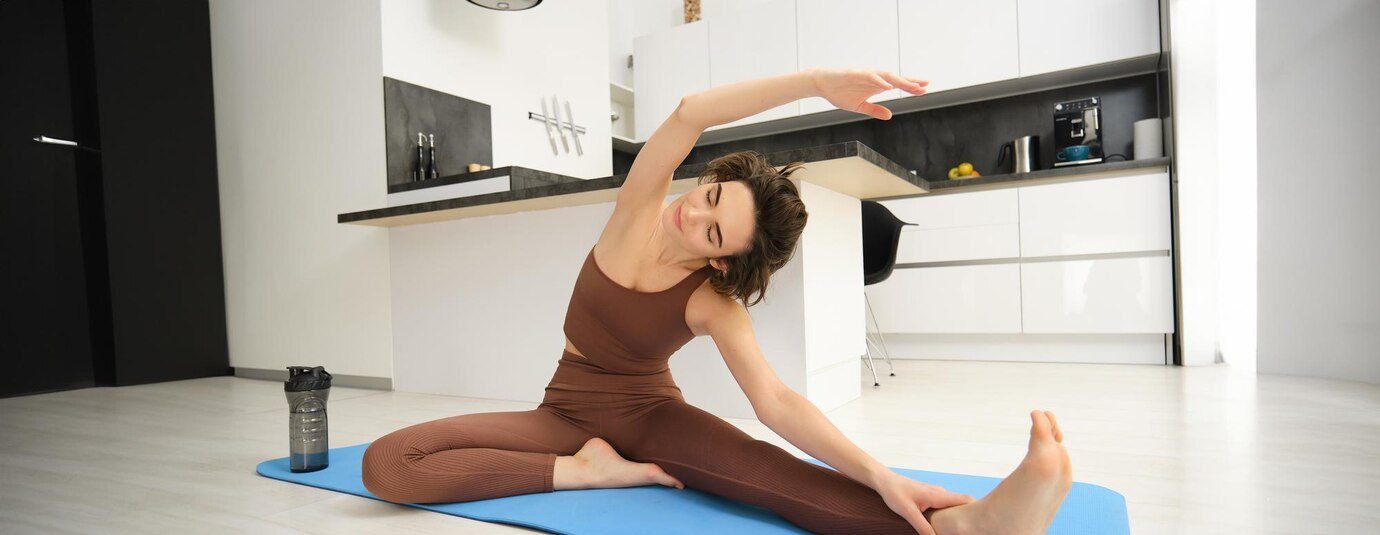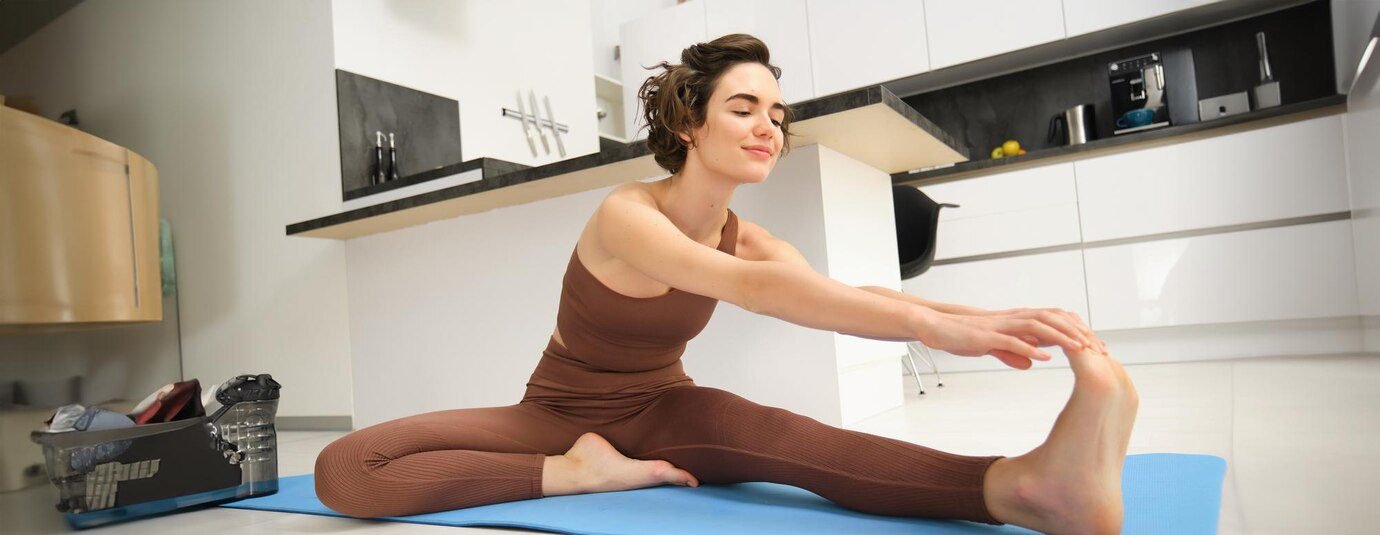Yoga has long been celebrated for its ability to improve physical health, reduce stress, and enhance overall well-being. Among its many benefits, one of the most significant is its impact on flexibility. Whether you’re a seasoned practitioner or a beginner, unlocking the amazing benefits of yoga for flexibility can lead to improved mobility, reduced risk of injury, and a greater sense of freedom in movement. However, many people inadvertently make mistakes that limit their progress in achieving optimal flexibility through yoga. In this article, we’ll explore how yoga can improve your flexibility, the incredible benefits it offers, and the common mistakes you should avoid to fully unlock the potential of your practice.

The Incredible Benefits of Yoga for Flexibility
When it comes to flexibility, yoga stands out as one of the most effective practices to help you achieve better mobility in your muscles, tendons, and joints. By incorporating a combination of stretching, strengthening, and breathing techniques, yoga targets both the body and mind, enhancing physical flexibility while promoting mental relaxation.
1. Improved Range of Motion:
One of the key benefits of yoga for flexibility is the gradual improvement of your range of motion. As you engage in various yoga poses, your muscles lengthen and your joints become more mobile. Over time, this increased flexibility can improve posture, enhance athletic performance, and reduce stiffness, leading to a more fluid and comfortable movement in daily activities.
2. Injury Prevention:
Yoga is an excellent way to increase flexibility and prevent injuries. When your body is flexible, it can better absorb impacts and reduce the likelihood of strains and sprains. Regular practice helps to keep your muscles balanced, which is essential for preventing injuries caused by tight or overworked muscles. Unlocking the amazing benefits of yoga for flexibility not only helps you feel better but also strengthens your body to avoid the discomfort of injury.
3. Increased Blood Flow and Circulation:
The deep stretching and twisting movements in yoga improve circulation by encouraging blood flow to areas that may be restricted due to tightness. This increased circulation allows for better delivery of nutrients to muscles and tissues, which aids in their recovery and overall health. As your flexibility improves, your muscles become more relaxed, reducing tension and promoting a sense of calm and well-being.
4. Better Posture:
Tight muscles can lead to poor posture, which can contribute to back pain, neck strain, and discomfort. Unlocking the amazing benefits of yoga for flexibility helps to stretch and strengthen the muscles that support proper posture, leading to a more upright and aligned stance. This not only helps with comfort but also boosts confidence and appearance.
5. Enhanced Mental Clarity and Relaxation:
Flexibility in yoga isn’t just about the body; it’s also about the mind. Yoga encourages mindfulness and breath control, helping you develop a deeper connection with your body. This mental focus allows you to let go of distractions, reduce stress, and cultivate a sense of peace. Achieving greater flexibility through yoga is as much about mental release as it is physical release, providing benefits that extend beyond the mat.

Common Mistakes That Can Hold You Back from Unlocking the Benefits of Yoga for Flexibility
While yoga is an incredibly powerful tool for improving flexibility, there are some common mistakes that can prevent you from fully unlocking its benefits. Let’s take a look at these mistakes and how to avoid them so you can truly experience the amazing benefits of yoga for flexibility.
1. Pushing Too Hard, Too Fast:
One of the biggest mistakes people make when practicing yoga for flexibility is trying to force their bodies into deeper stretches before they’re ready. Yoga is about gradual progression, and pushing too hard can lead to overstretching, injury, and frustration. To unlock the amazing benefits of yoga for flexibility, focus on slow, steady improvements and listen to your body. Flexibility takes time, and trying to rush the process can set you back in the long run.
2. Ignoring Proper Alignment:
Achieving flexibility in yoga is not just about how deep you can stretch; it’s about maintaining proper alignment during each pose. Poor alignment can lead to imbalances, strain, and discomfort, limiting the full benefits of yoga. Always pay attention to your body’s positioning and make adjustments when needed. If you’re not sure about your alignment, consider taking a class with a qualified instructor who can guide you in the right direction.
3. Neglecting Breath Control:
Breathing is a fundamental aspect of yoga practice, yet many people overlook its importance when working on flexibility. Deep, controlled breathing helps to relax your muscles and allows you to stretch more effectively. It also helps reduce tension and prevents you from holding onto discomfort during challenging poses. To truly unlock the benefits of yoga for flexibility, focus on your breath as much as your movements, allowing each inhale and exhale to guide you deeper into your practice.
4. Not Warming Up Properly:
A proper warm-up is essential before engaging in any yoga practice, especially when your goal is to increase flexibility. Cold muscles are less pliable and more prone to injury. A dynamic warm-up that includes gentle stretching and movement will help prepare your body for the deeper stretches needed in yoga. Without this preparation, you may find it difficult to unlock the amazing benefits of yoga for flexibility.
5. Skipping Consistency:
Flexibility is not something you can achieve overnight. It requires consistent practice over time. Skipping sessions or practicing yoga sporadically will hinder your progress. To see the full benefits of yoga for flexibility, commit to regular practice. Aim for at least 3-4 sessions per week, even if they are shorter sessions, to gradually increase your flexibility and strength.
Tips for Maximizing the Benefits of Yoga for Flexibility
To truly unlock the amazing benefits of yoga for flexibility, here are a few tips to help you get the most out of your practice:
1. Focus on Your Limitations:
Identify the areas of your body that feel particularly tight or stiff. By focusing on these areas during your yoga practice, you can target the muscles that need the most attention. This will help you see progress more quickly and improve flexibility in those areas.
2. Use Props to Assist Your Practice:
Props like yoga blocks, straps, and blankets can assist you in deepening your stretches while maintaining proper alignment. These props allow you to modify poses to suit your current level of flexibility, making it easier to unlock the amazing benefits of yoga for flexibility without pushing yourself too hard.
3. Stay Patient and Trust the Process:
Flexibility takes time, and everyone’s body is different. Be patient with yourself and avoid comparing your progress to others. With consistent practice and a mindful approach, you’ll begin to experience the benefits of increased flexibility over time.

In addition to improving flexibility, yoga offers a wealth of benefits for mental well-being. Yoga Poses for Stress Relief can help you relax, calm your mind, and release tension from your body. By incorporating stress-relieving poses into your practice, you’ll not only enhance your flexibility but also experience greater emotional balance and peace of mind. As you unlock the amazing benefits of yoga for flexibility, don’t forget to explore the mental clarity and relaxation that yoga offers.
Conclusion: Unlock the Amazing Benefits of Yoga for Flexibility
Incorporating yoga into your fitness routine is an excellent way to increase flexibility, improve posture, and reduce the risk of injury. Unlock the amazing benefits of yoga for flexibility by staying consistent, focusing on proper alignment, and avoiding common mistakes that can hold you back. By practicing yoga with patience and mindfulness, you’ll gradually experience the profound physical and mental benefits that come with enhanced flexibility, making yoga an invaluable tool for both body and mind.



